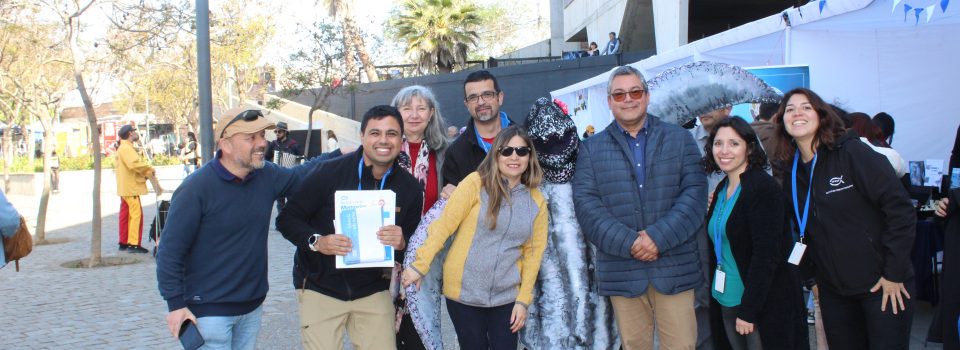IFOP stand at Oceanic Fair was the most visited
August 8th, 2024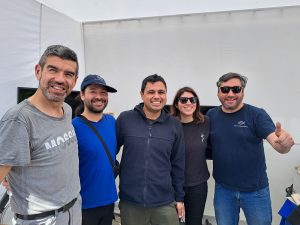 On Friday, November 3rd and Saturday, November 4th, at Valparaíso’s Ex-jail Cultural Center, Acción Azul Oceanic Festival was held, an NGO dedicated to oceanic culture protection and dissemination.
On Friday, November 3rd and Saturday, November 4th, at Valparaíso’s Ex-jail Cultural Center, Acción Azul Oceanic Festival was held, an NGO dedicated to oceanic culture protection and dissemination.
Fisheries Development Institute was part of the activity, with an interactive stand and Gonzalo Pereira Puchy Executive Director, participated in a blue economy’s discussion in which he referred to IFOP’s work and how the institute’s research work tdevelops, is of vital importance in our country economy, since it allows our marine and aquaculture resources sustainability.
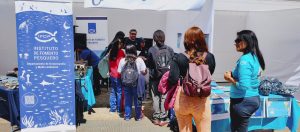 The module at the fair allowed children and adults to learn in a practical and playful way about IFOP ‘sresearch work in fishing and aquaculture.
The module at the fair allowed children and adults to learn in a practical and playful way about IFOP ‘sresearch work in fishing and aquaculture.
The exhibition had a module on the conventional and satellite tagging program for highly migratory animals, mitigation measures to reduce sea turtles and cetaceans bycatch swordfish gillnets, and information on ecology, life history and threats to sharks and sea turtles.
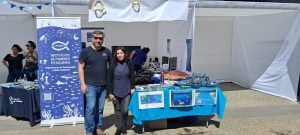 There was also a age and growth section with state-of-the-art magnifying glasses, where visitors could observe different fish species otolith rings, as well as a short talk about the most relevant aspects of this area of research, such as how to read otoliths, what fish’s ages are used for, some otolith preparation techniques, among others.
There was also a age and growth section with state-of-the-art magnifying glasses, where visitors could observe different fish species otolith rings, as well as a short talk about the most relevant aspects of this area of research, such as how to read otoliths, what fish’s ages are used for, some otolith preparation techniques, among others.
The oceanography department presented its main used instruments to describe water masses and marine currents, and nets and magnifying glasses for capturing and observing zooplankton. People were also able to enter the Humboldt Current Alert, Prediction and Observation (SAPO) system, where they could observe establishment of positive El Niño anomaly off Peru and Chile, discuss climatic change, and to understand the importance to maintain real time oceanographic information networks.
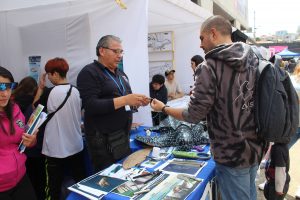
The oceanography laboratory belonging to Oceanography Department and Environment (DOMA) showed the importance and use of scientific equipment in carried out sampling by the Institute around the country. For this, scientific equipment was shown to the public such as; CTD oceanographic probes, capable of reaching up to 6000 meters deep, recording environmental parameters such as temperature, salinity, oxygen, fluorescence and pressure throughout the water column. On the other hand, drifting buoys were shown, which are capable of indicating the surface movement of ocean currents and inferring the intensity of the wind. In addition, the audience was taught the method of capturing water at certain depths, a method that It is more than 160 years old and is still valid today.
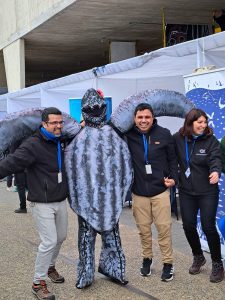 From the plankton laboratory of Oceanography and Environment Department (DOMA), people of all ages were able to learn about zooplankton and see these organisms under a stereoscopic magnifying glass, which are diverse and of great importance as they are fish’s main foods, marine mammals and marine invertebrates. They were also able to observe eggs and larvae of commercially important fish, mainly anchovy and common hake.
From the plankton laboratory of Oceanography and Environment Department (DOMA), people of all ages were able to learn about zooplankton and see these organisms under a stereoscopic magnifying glass, which are diverse and of great importance as they are fish’s main foods, marine mammals and marine invertebrates. They were also able to observe eggs and larvae of commercially important fish, mainly anchovy and common hake.
Another attraction was Laudita turtle, a corporeal leatherback turtle that greeted visitors and became the star of the stand, because of her friendliness everyone wanted a photo with her.
Press related links:
